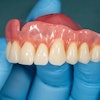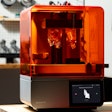
An initiative by the U.S. Food and Drug Administration (FDA) to require improvements in medical devices for pediatric imaging was uniformly applauded by attendees at a daylong public workshop held July 16 on the FDA campus in Silver Spring, MD.
Called after several high-profile cases in which children were overexposed to medical radiation, the workshop served as a national podium for pediatric medical imaging specialists and industry representatives to express their support of an FDA draft guideline recommending additional pediatric-related information in premarket notifications for x-ray imaging devices.
But presenters on both sides also expressed concern about specific elements in the guidelines, and warned that a lack of clinically validated information and standards could work against the initiative.
Safety first
The impetus for the workshop came from the FDA's launch of a new program that will require manufacturers to consider the safety of children when designing new modalities. It published a draft guidance document on May 10, for which public comment is currently being solicited through September 7, 2012.
The FDA doesn't question the benefits of diagnostic imaging, particularly the advances in rapid diagnosis offered by CT exams. But the steadily increasing use of ionizing radiation to diagnose both children and adults in the U.S. has convinced the agency that imaging must be clinically justified, optimized for the lowest possible dose, and made as safe as possible for patients.
The workshop was moderated by U.S. Navy Capt. Sean Boyd, MPH, deputy director of the Division of Mammography Quality and Radiation Programs of the Center for Devices and Radiological Health (CDRH).
Boyd praised the efforts of the Image Gently and Image Wisely campaigns to raise awareness of radiation dose at a global level, the American College of Radiology's (ACR) Dose Index Registry initiative to fill a void until a national dose registry is established, and the ACR's newly launched effort to commercialize clinical decision support guidelines in its Appropriateness Criteria. He also acknowledged improvements in radiation dose check features, the result of partnership activities by the American Association of Physicists in Medicine (AAPM) and the Medical Imaging and Technology Alliance.
— Thalia Mills, PhD, Center for Devices
and Radiological Health
"DICOM Structured Reporting has made possible the standardized collection and reporting of radiation dose data and its transfer in the future to a national dose registry recording diagnostic reference levels. However, systems are needed to automate capture and transfer, and knowledge tools are needed to make sense of the data," Boyd acknowledged.
The U.S. Department of Defense and the Department of Veterans Affairs are planning to collect dose data and are considering establishing a federal dose registry, according to Boyd.
Medical physicist Thalia Mills, PhD, of the diagnostic devices branch of the CDRH's mammography quality and safety program, also discussed pediatric dose reduction efforts.
"We have a responsibility in reducing radiation exposure, especially for children," Mills said. "Younger patients are more sensitive to radiation than adults, they have a higher cancer risk, and realistically they may have many more high-radiation-dose exams in their lifetimes than their parents and grandparents."
Everyone in the imaging chain must be proactive, starting with parents asking if the exam is necessary and child-optimized to referring physicians, who could do more to justify and educate both the benefits and risks of imaging to parents, Mills emphasized.
Imaging professionals need to optimize dose for pediatric patients on the modalities they use, develop pediatric-specific protocols, and maintain aggressive quality control programs that include dose monitoring and benchmarking against diagnostic reference levels. And vendors need to design equipment that is as safe as possible for children, she added.
"The problem today is that some x-ray imaging equipment isn't sold with special pediatric radiology features, or the features are not defined for pediatric use," Mills said.
At present the regulatory process may work against this because manufacturers may be hesitant to submit new features to the FDA, she noted. The draft guidance under consideration is designed to make this process easier for manufacturers, she said.
Some recommendations
Dorothy Bulas, MD, a professor of pediatrics and radiology at the Children's National Medical Center in Washington, DC, and Ralph Lieto, a medical physicist at St. Joseph Mercy Hospital in Ann Arbor, MI, both pointed out the implications of a label on a scanner that would state it was not intended for pediatric use if its manufacturer had not met premarket guidelines relating to pediatric imaging. They suggested that this guidance recommendation be removed.
"Such labeling would require that machines be used off-label," Lieto added, representing the AAPM. He also suggested that the FDA draft guidelines be based on patient thickness rather than height, weight, and age. "A 12-year-old may have the same sized abdomen as a very small adult woman," he pointed out.
Dr. Bulas, representing the American Academy of Pediatrics (AAP), expressed concern that some manufacturers may choose not to submit pediatric-specific information to the FDA, but that the equipment they sell may be very adaptable to pediatric protocols and dose reduction techniques.
"The market for pediatric imaging is small. FDA submissions are costly," she noted. "We don't want to create barriers where they don't need to exist."
But she applauded vendor efforts to provide specifications for pediatric protocols, increased information to support pediatric guidelines, assistance to support users when they are developing pediatric dose parameters, and easy-to-use quality assurance tools to track radiation dose.
Improved training and testing are needed, and materials need to be user-friendly, easily accessible, and understandable. Equipment available today can be cumbersome and time-consuming to figure out how to use, she said. Vendors can help by providing more information.
The failure of vendors to provide more information on their products was lambasted by Keith Strauss, PhD, a clinical imaging physicist at the Cincinnati Children's Hospital Medical Center. He was blunt in his criticism of a vendor that withheld information he needed for validation testing because the vendor considered it proprietary -- and still does.
"Design engineers must get out of their ivory towers and into the clinical arena. Knowledge must be shared, and mutual trust must be established to allow for a free exchange of information and ideas," he said.



















